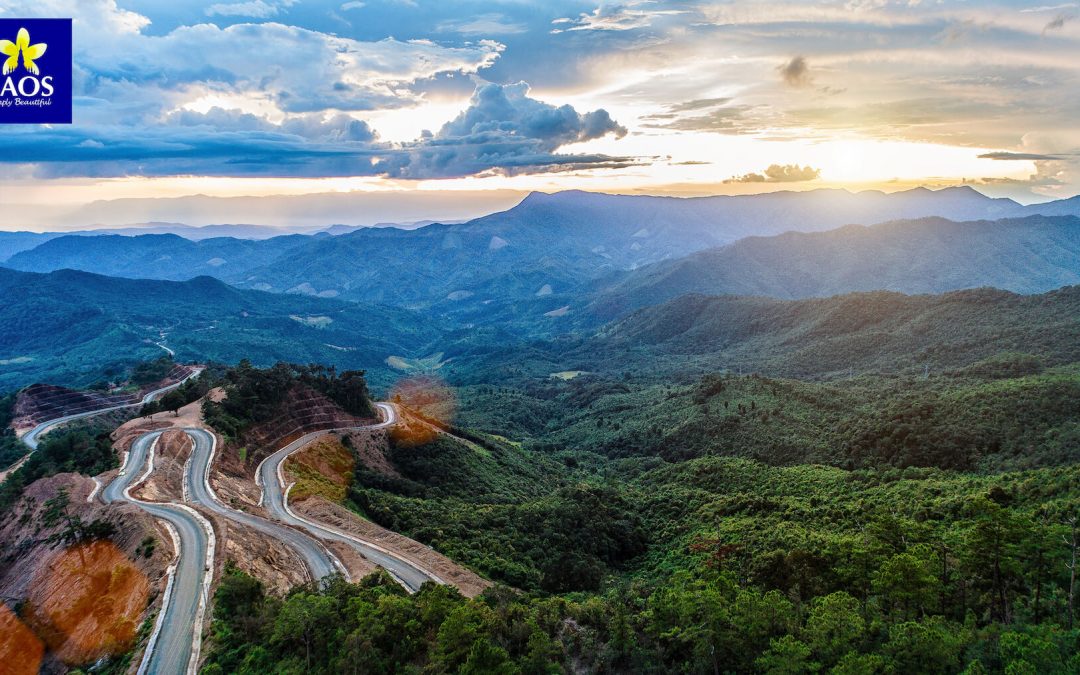Welcome to Min-On’s Music Journey! Today, the Min-On Concert Association and the Embassy of the Lao People’s Democratic Republic in Japan welcome you to Laos, a landlocked country located in the center of the Indochina Peninsula.
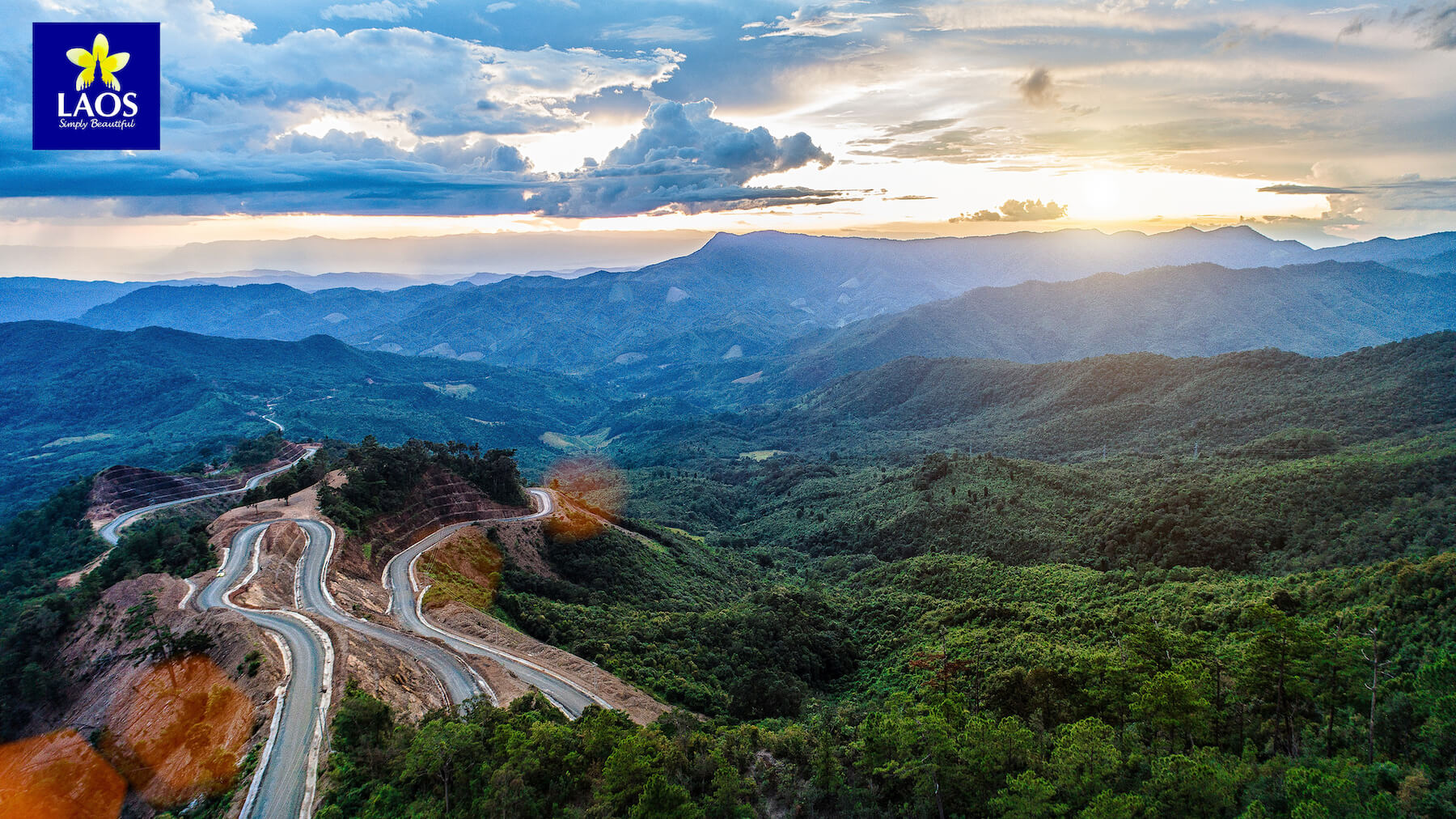
| Travel guide for Laos
・Immerse yourself in Laos’ incredible atmosphere at the country’s largest festival, the That Luang Festival |
Laos is a landlocked country surrounded by Cambodia, China, Myanmar, Thailand and Vietnam. Most of the country is mountainous and the Mekong River, which flows from north to south along Laos’ border with Thailand in the west, is an essential part of its people’s lives.
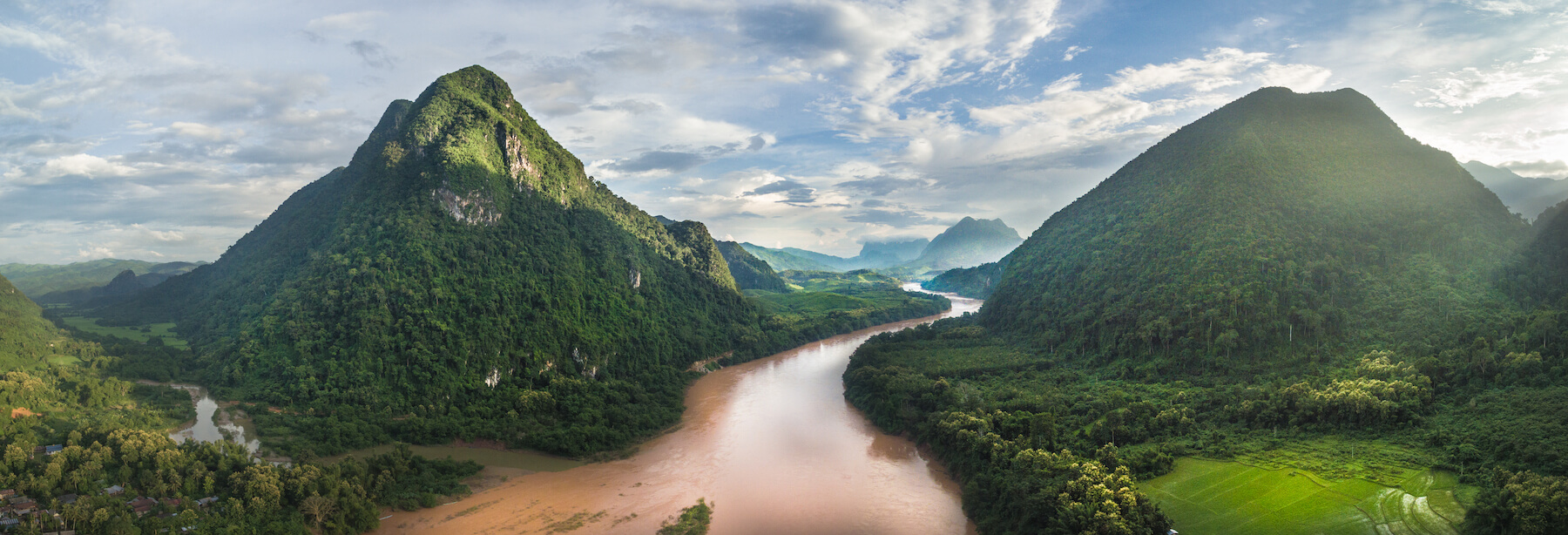
Laos and its people as “a nation of healing”
Laos is known for its slow pace of living, and is often referred to as “a nation of healing.” The generous and slow-paced Laotian people are known for their positive characteristics and value placed on mutual aid.
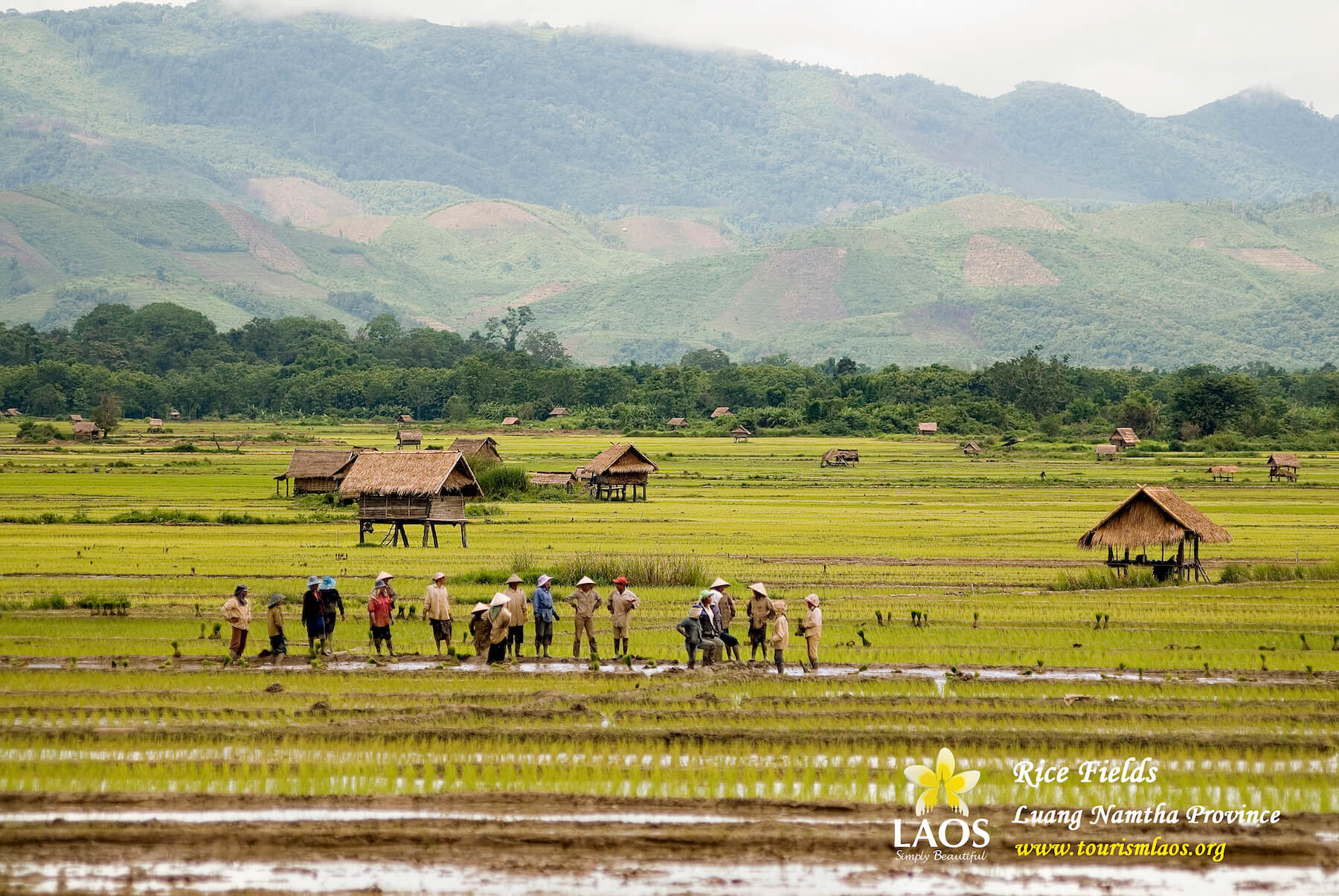
A commonly used phrase that characterizes the Laotian people in their language is “bor pen nyang.” This means “It’s okay” or “It’s nothing.” This phrase is used, for example, when people bump into each other on the street, to keep relations congenial and not make each other feel uncomfortable.
Another common phrase is “phi nong kan,” usually used to refer to one’s extended family members. However, as you may refer to someone you met during your travels as a brother or sister, this phrase includes people who aren’t related by blood. This phrase is unique to Laos, a country that values human relationships.
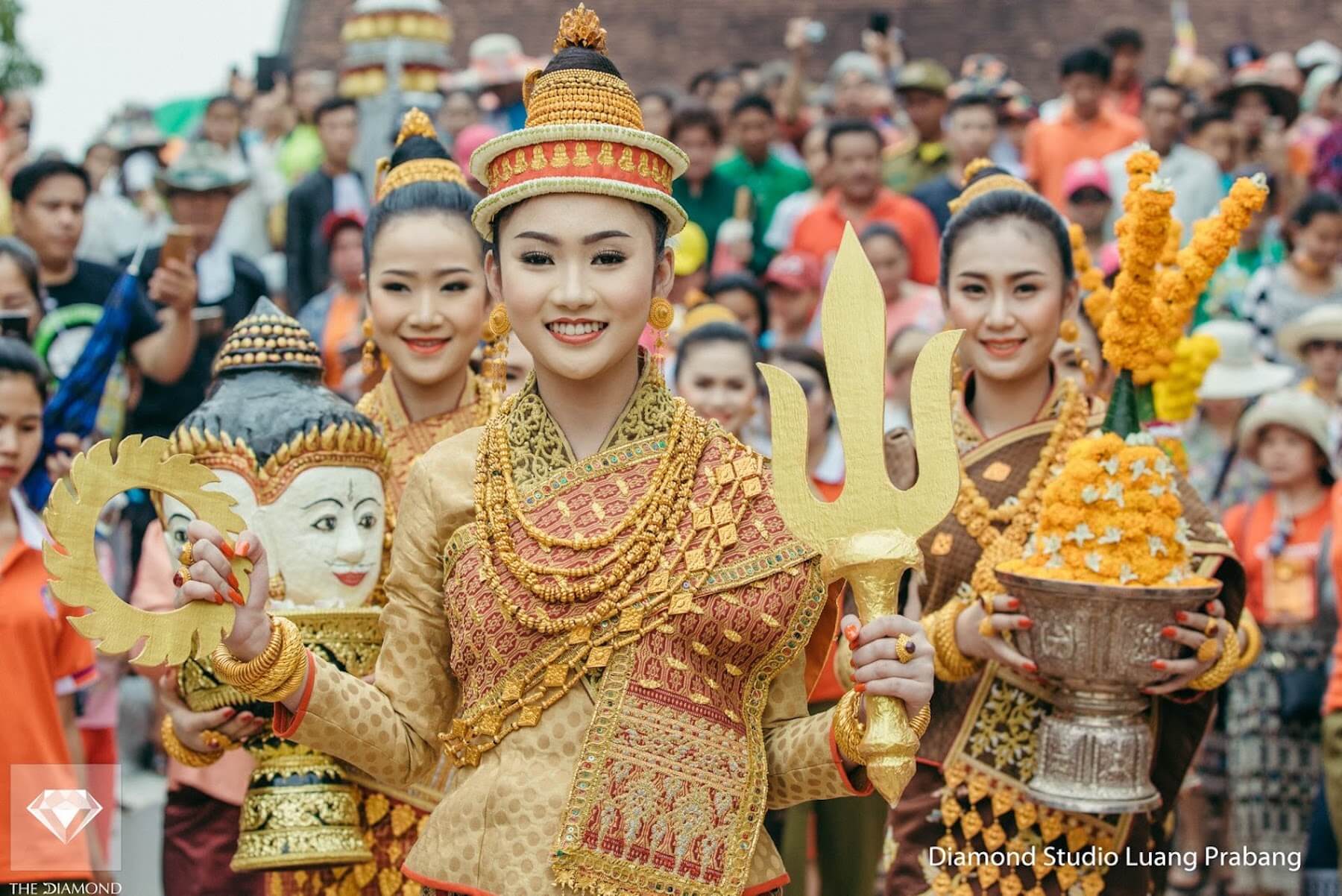
Capital Vientiane, gateway to Laos
Laos’ capital of Vientiane is located along the Mekong River. It is a vibrant city blessed with beautiful natural surroundings. A must-visit location in Vientiane is Pha That Luang, the most important temple in Laos, which is a majority Buddhist country.
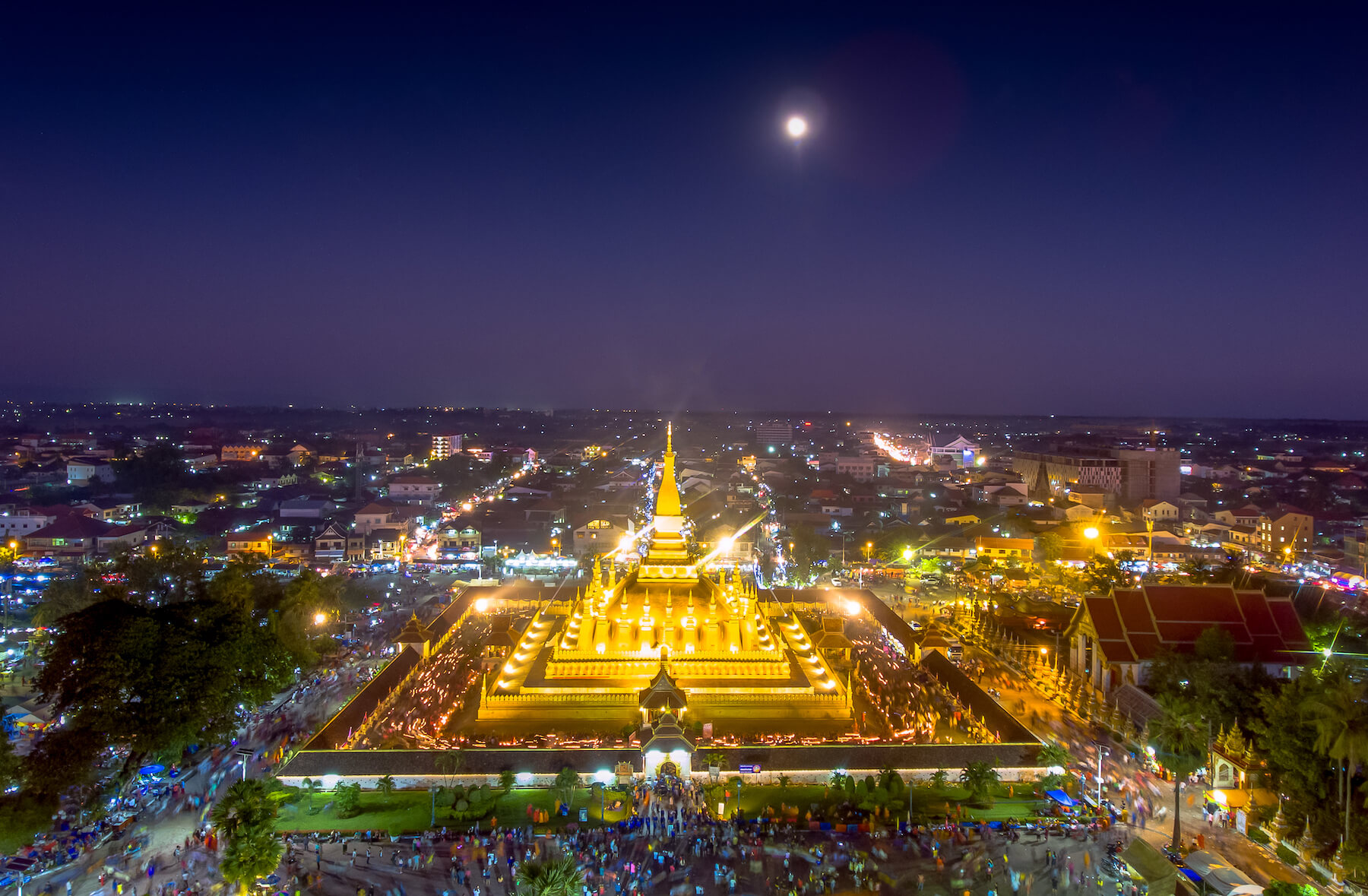
According to one theory, Pha That Luang was built around the 3rd century BC by an emissary from India to house the breastbone of Buddha. The three-story golden stupa, 85 meters in circumference and 45 meters high, was reconstructed in the 16th century. Today it stands tall and majestic, with an overwhelming presence.
That Luang Festival, the largest in Laos
In December of each year, the That Luang Festival – the largest in the country – is held at Pha That Luang. Monks and Buddhists gather from all over Laos, and the plaza is lined with food stalls and company booths a week in advance of the festival date.
Here, stalls sell food and beverages, alongside the latest electronics, clothing and more, giving the festival the air of a variety trade fair. Traditional dances of different ethnic groups are performed on a large stage in the plaza, allowing visitors to experience many different charms of Laos.
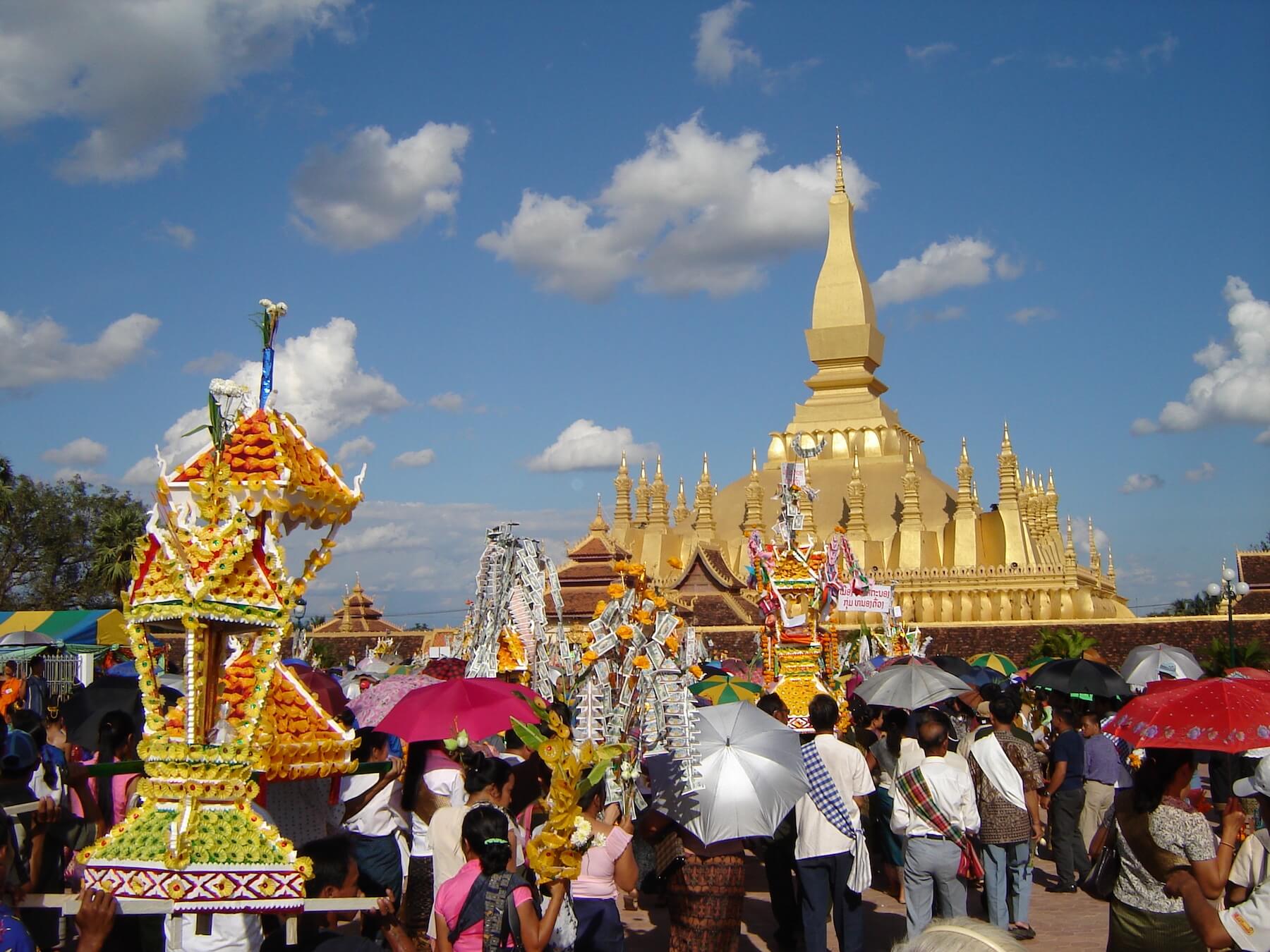
In addition to Pha That Luang, Vientiane also has other attractions including the Patuxai, a monument visitors can climb to overlook the city, and the Friendship Bridge, which crosses the Mekong River to Laos’ border with Thailand.
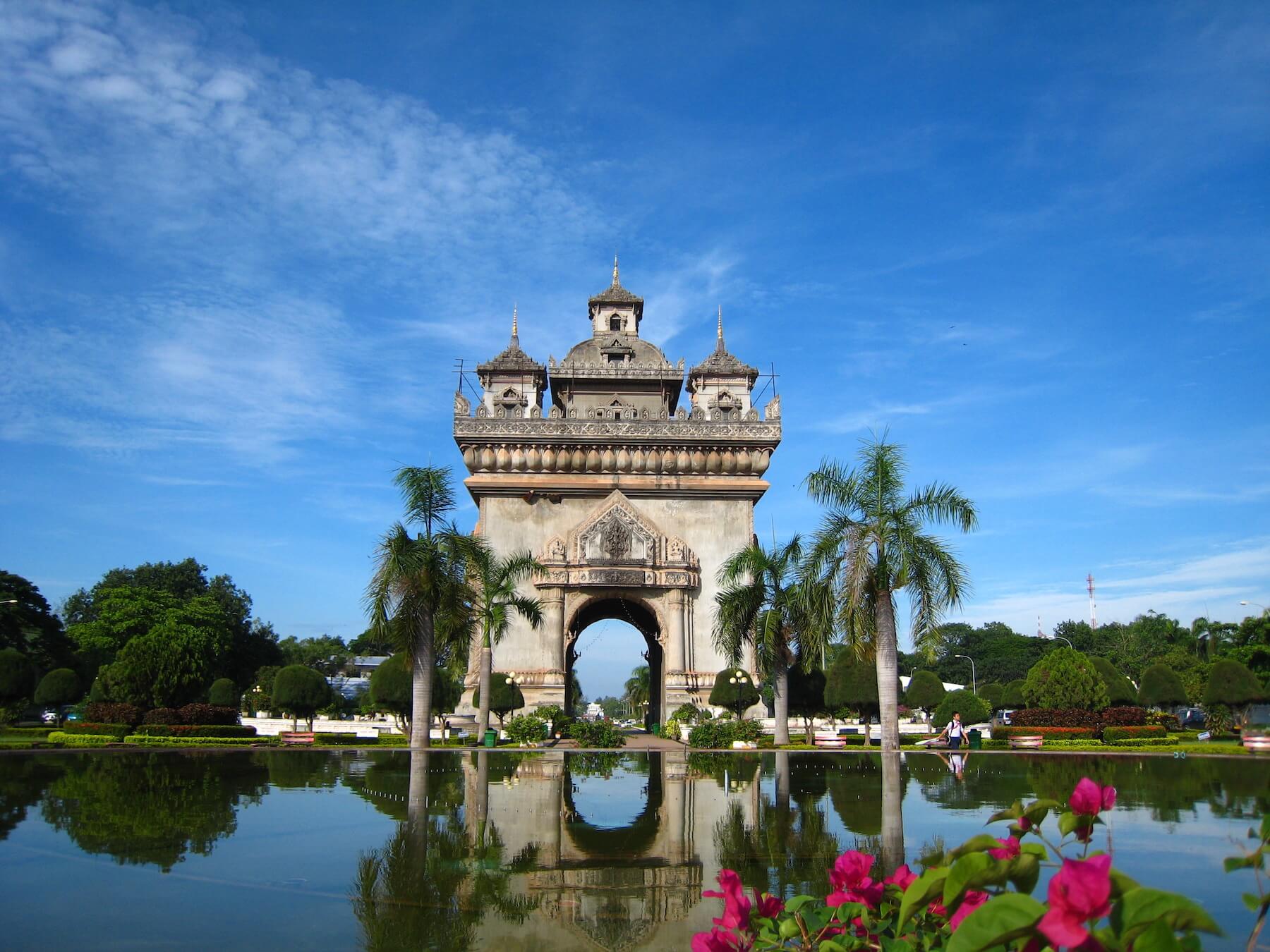
Soothing natural landscapes and World Heritage sites
Laos’ beautiful natural scenery seems to make life move at a slower pace. Cities that lie along the Mekong River offer spectacular views of the sunset as it slowly sinks low in the horizon over the water.
Taking a moment for relaxation and mindfulness while watching the majestic sunset here will be an unforgettable memory from your trip.
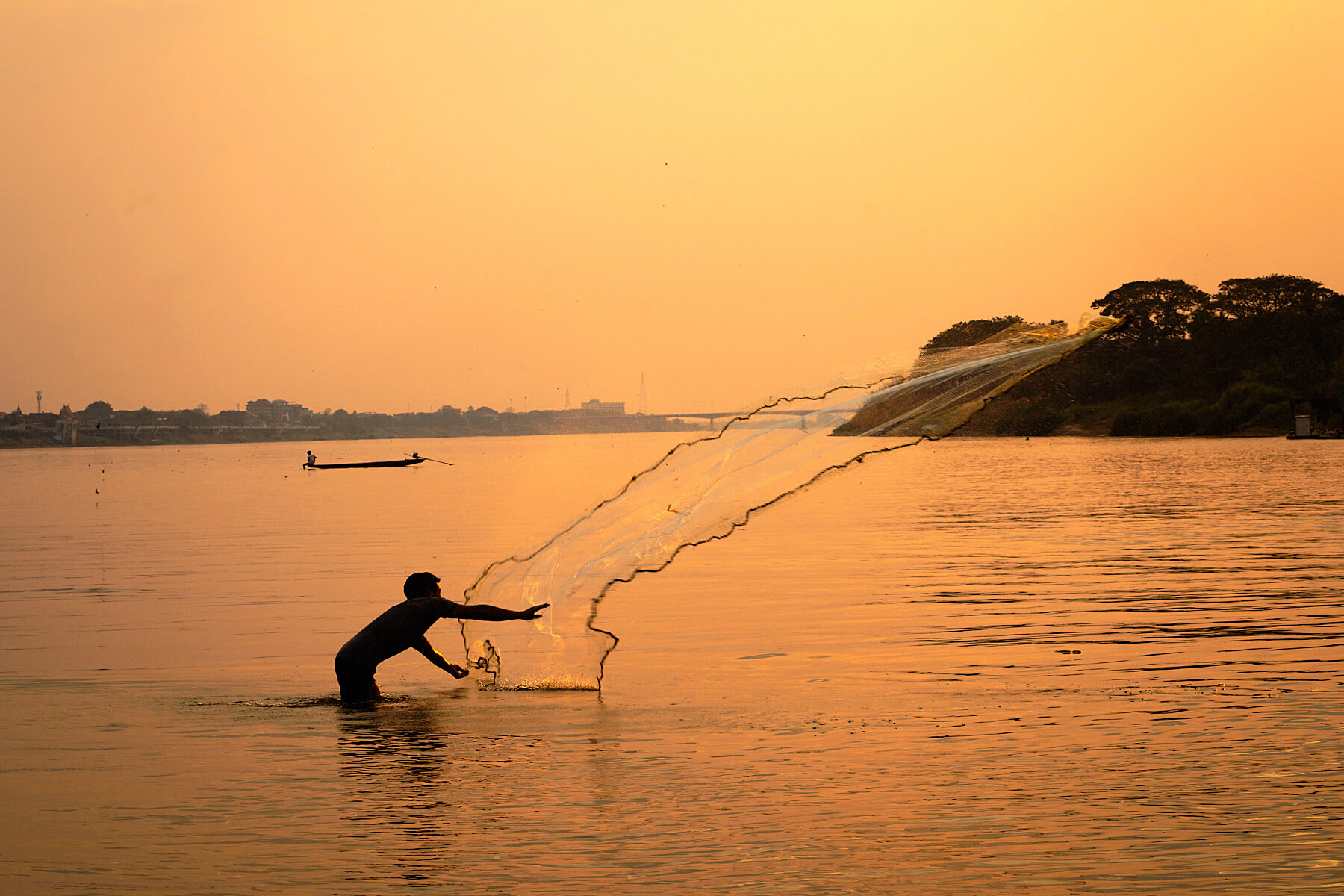
The ancient city of Luang Prabang
Once the capital of Laos, the entire city of Luang Prabang is registered as a World Heritage site. The area is full of history and stunning nature, including Wat Xueng Thong, considered one of Laos’ most beautiful temples, and the emerald-green Tat Kuang Si Waterfalls.
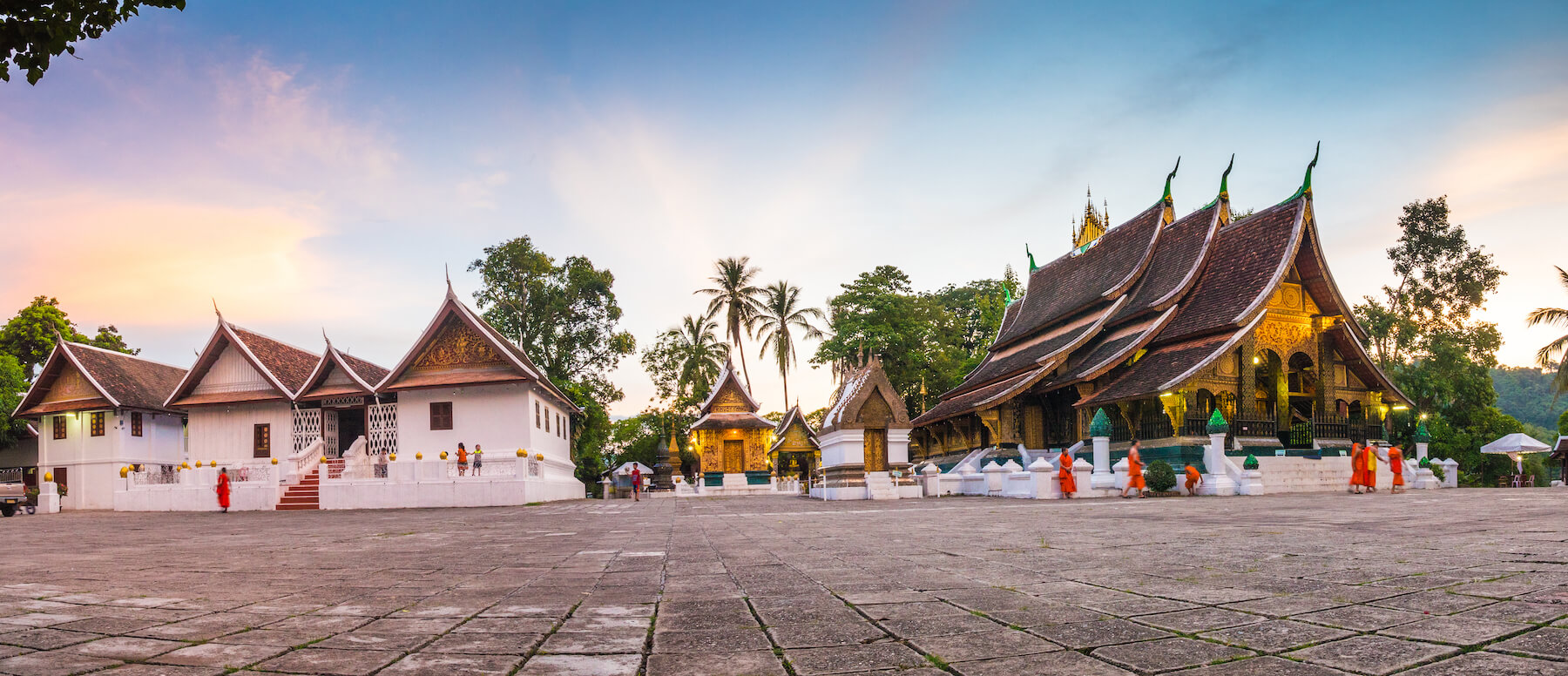
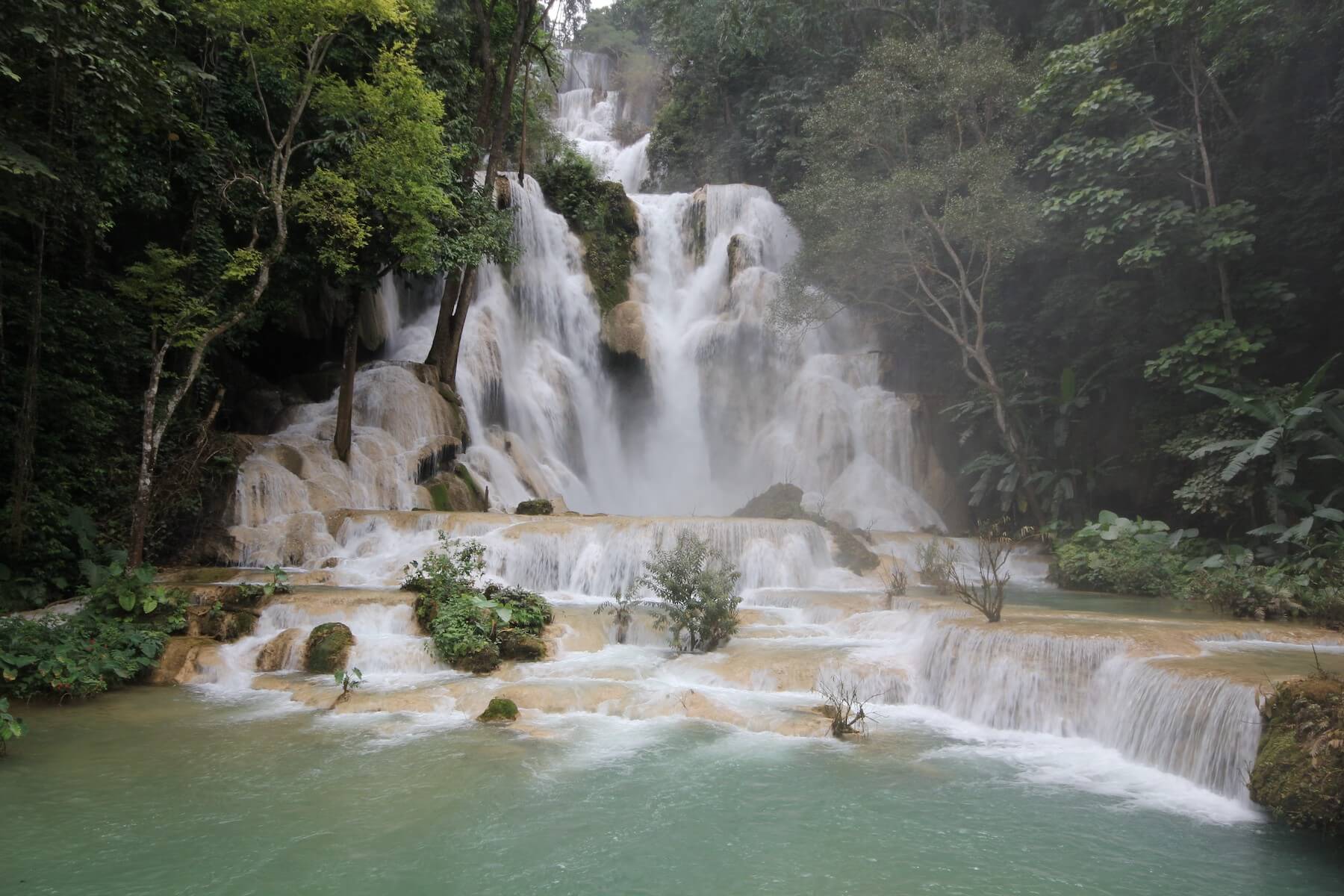
Morning and night markets here give visitors a glimpse into the local peoples’ daily lives. On the other hand, Luang Prabang also offers sophisticated hotels, cafes, restaurants and other facilities that make it a great resort destination.
Vat Phu and related ancient heritage sites
“Vat” means temple and “Phu” means mountain. As the name implies, Vat Phu is a vast temple complex built on a hill. It consists of three areas: the foot of the mountain, the middle of the mountain and the mountainside. During the Wat Phu festival, the entire building is lit up in a spectacular display making it a popular event with tourists.
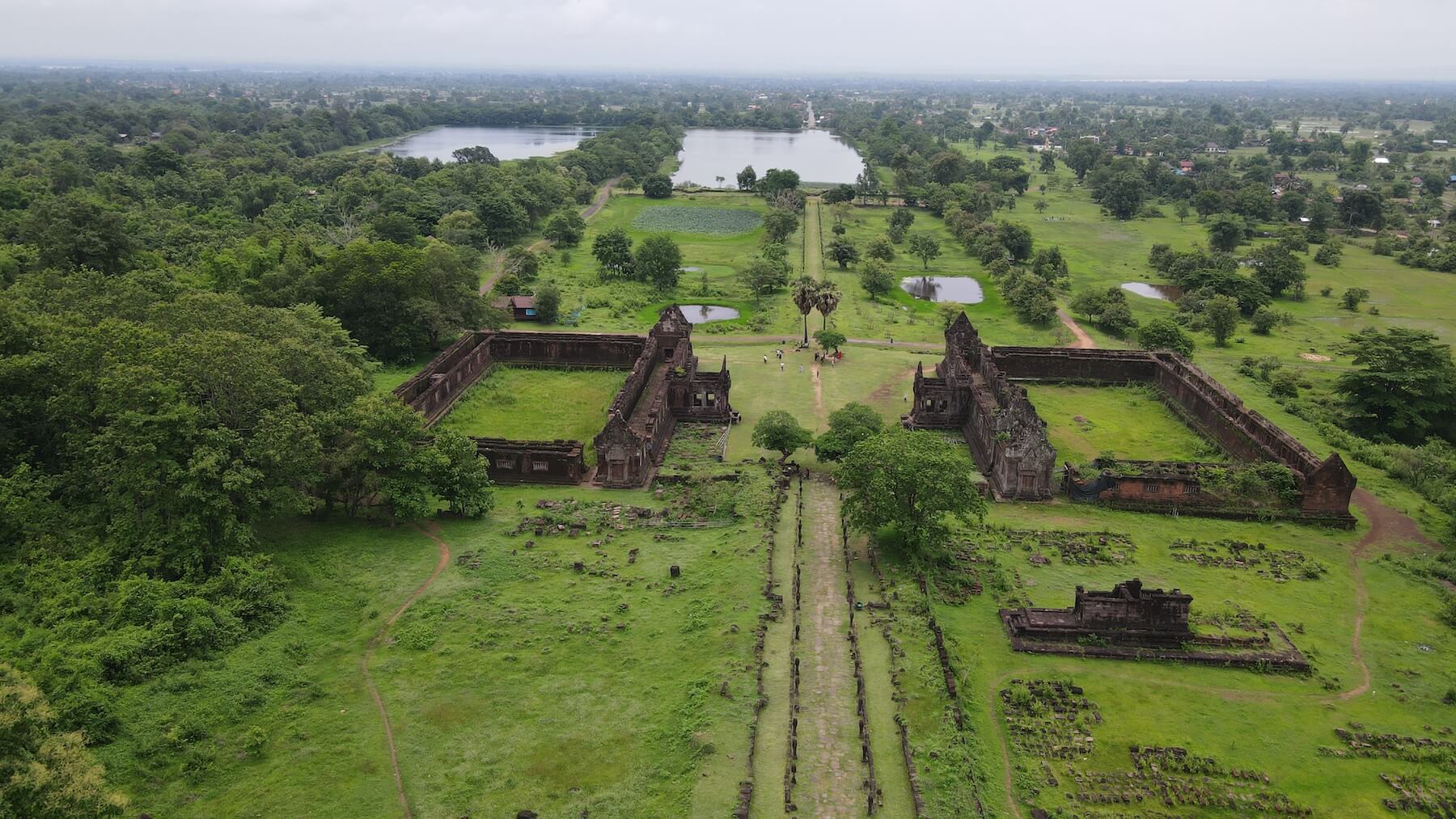
Traditional Laotian music
One of the most important features of traditional Laotian music is the traditional instrument called a khene. A type of free reed musical instrument consisting of 16 bamboo tubes divided into two rows and bound together, it is said to be the origin of Chinese and Japanese free reed musical instruments.
The khene is played with both hands and is characterized by the unique harmony of multiple bamboo pipes and clear, crisp tones. It is widely used in wind ensembles and as accompaniment for folk dances. In the traditional song “Lam (Mor lam)” (a folk song characterized by rap-style singing), the khene takes the lead and is played alongside the band’s rhythm instruments.
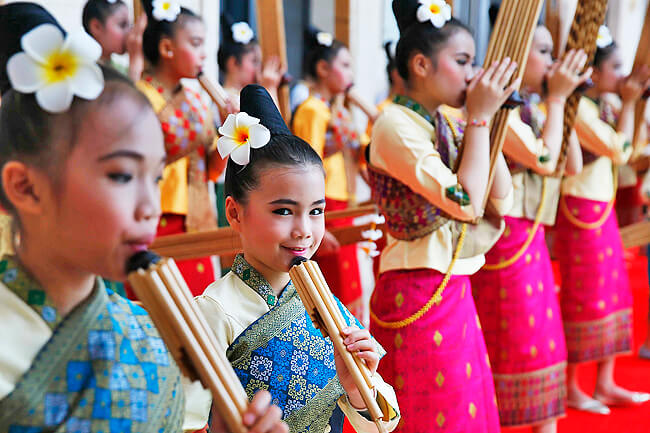
Folk songs are also very popular in Laos, with different characteristics in the northern, central and southern regions. Also, the traditional Lam Vong dance features men and women dancing in pairs in a circle, and it remains very popular at weddings, parties, village festivals and other occasions. In the dance, women forming a circle on the outside and men gather on the inside, dancing as they move counterclockwise. The dancers are accompanied by regular participants who join the circle in male-female pairs, all dancing in unison.
In December 2009, Min-On held a concert titled “Rainbow Dance: Jewels of the Mekong” featuring performances from six countries, including the Laotian National Dance and Music Troupe, as a project authorized by the Mekong-Japan Exchange Year.
Musicians recommended by the Embassy of the Lao People’s Democratic Republic in Japan
In closing, we would like to introduce musicians recommended by the Embassy of the Lao People’s Democratic Republic in Japan.
- ບໍ່ໄດ້ຍາດຂອງໃຜ(Doesn’t Belong to Anyone - Khounkham Sittiyom (Taiy Akard)
- BLACK EYES - Khampasong Thirasack
- ໂສດເກີນ (Please) - Athisack Lattanavong (Sack Cell)
What did you think of your music journey to Laos? There are still many more places to go! Please look forward to our next destination.
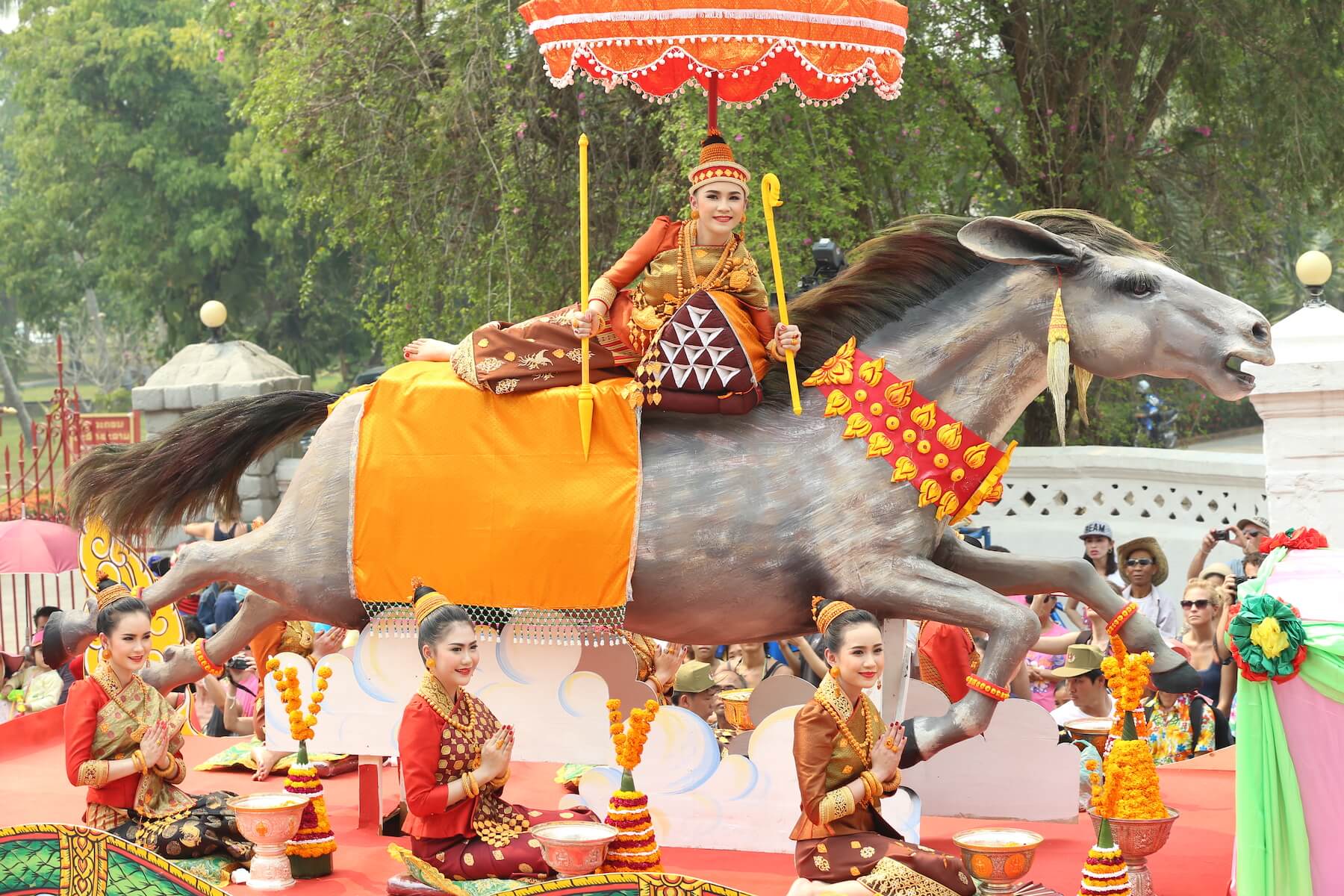
(Produced in collaboration with the Embassy of the Lao People’s Democratic Republic in Japan, who also provided photos.)
Min-On Concert Association
-Music Binds Our Hearts-


